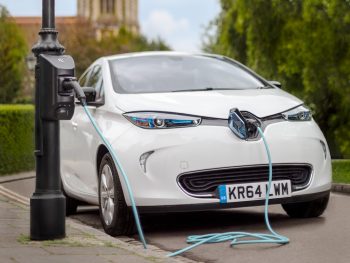Charging from lampposts 46% cheaper than on-the-road rapid charging
On-street charging could bring significant cost and convenience benefits to EV drivers but the Government must ramp up the number of residential charge points to avoid missing targets.

According to the AA, charging from a lamppost costs as little as 24p/kWh compared to around 45p/kWh at a rapid charge point
According to the AA, charging from a lamppost is cheaper than a typical on-the-road rapid charge point with costs as low as 24p/kWh compared to around 45p/kWh at a rapid charge point. It also finds that home charging can cost as little as 4.5p/kWh (off-peak), just 10% of on-the-road rapid charging.
But latest Department for Transport figures show the number of on-street residential charge points funded by the Government’s grant scheme currently stands at just 2,641 with a further 8,415 approved but not yet installed.
And the AA is warning that the DfT’s target of 120,000 on-street chargers by 2030 could be missed if more isn’t done to help promote on-street charging.
Jack Cousens, head of roads policy, said: “With around a third of households without any dedicated off-street parking, providing accessible and affordable local charging solutions is key.
“Ideally, drivers would like to charge as close as possible to their home, yet with around 10,000 on-street charge points currently planned, the installation rate needs to increase to more than 1,000 charge points each month just to meet the Government’s target. We should also remember that many rural areas suffer from a lack of off-street parking and we are concerned that on-street charging could become bookmarked as an urban problem.”
The latest DfT data shows just 87 councils out of almost 400 across the UK have applied for the on-street residential charge point grant since 2017 – and the AA says this needs to dramatically improve so that EV drivers across the country have access to good, local charge points.
“While there is much talk about boosting the number of rapid chargers to cater for those without off-street parking, the reality is that most want to charge close to home for both convenience and cost. Drivers want to keep the costs down and would prefer a variety of charging options rather than keep relying on increasing rapid charging costs.”
He also said that costs for on-the-road street charging could become more affordable if the Government matched the AA’s calls to cut VAT on public charging to mirror domestic energy costs.
“Every additional charge point installed helps reduce the over-exaggerated worries of range anxiety and legitimate concerns drivers won’t find a working charger when they need one. These concerns are always in the top three barriers to EV ownership, so increasing the number and type of chargers, as well as making them more reliable, would help tackle these fears.”
The new DfT charge point statistics also show that there was a significant jump in uptake for domestic charging devices in the last year, with 121,001 device installations between 1 April 2021 and 1 April 2022 on the Electric Vehicle Homecharge Scheme (EVHS). That’s an increase of 86% on the previous year, but was largely driven by the ending of the scheme this April to instead focus on rented/leasehold premises, in particular flats.
Meanwhile for the Workplace Charging Devices grant scheme – which has also been reformed – the figures show that as of 1 April 2022 the WCS has funded the installation of 26,424 sockets in workplace carparks since the scheme started in 2016.
It also funded 10,727 sockets installations between 1 April 2021 and 1 April 2022; an increase of almost 60% compared to the previous 12-month period.












